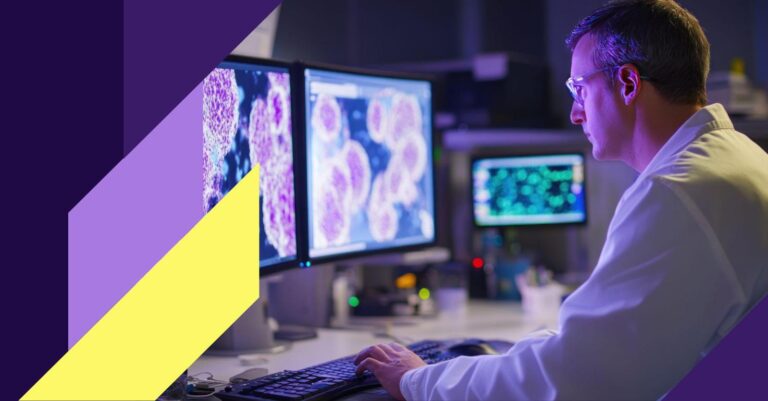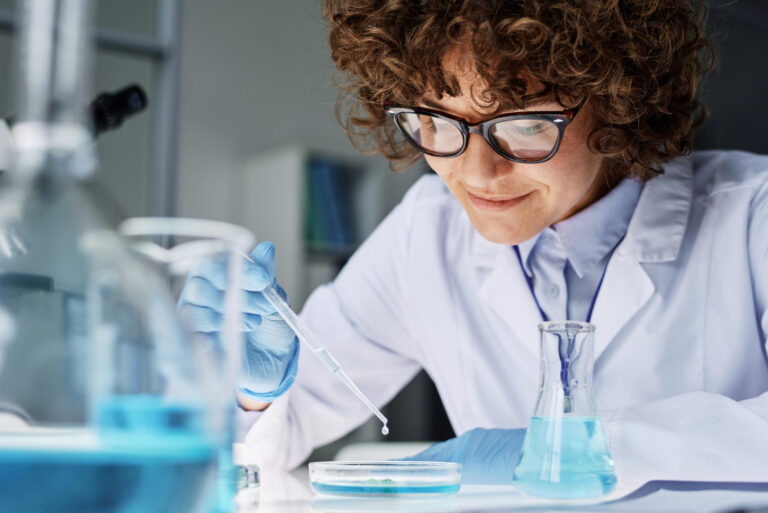The enormous burden imposed by the COVID-19 pandemic on our society and the profound consequences for the personal, social, health-related and economic aspects of our daily lives has triggered a race towards the development of therapies that act against its causative agent (i.e. SARS-CoV-2), including antibodies and vaccines. Although the fast pace of private companies and scientific institutions in addressing this problem is justified by the seriousness of the threat, the implementation of therapeutic strategies cannot be exempted from safety considerations. Two aspects associated with the risk of the disease worsening following treatment with antibodies or antibody-inducing vaccines are considered here: antibody-dependent enhancement and cytokine storm syndrome.
As a public health emergency of international concern, the COVID-19 pandemic has drawn global attention and response, leading both companies and scientific institutions to design strategies against the disease-causing virus, i.e. SARS-CoV-2. The direct administration of antibodies that target Spike glycoprotein and prevent the virus from entering human cells is one of therapeutic options that are being currently developed. The second viable strategy is a vaccine capable of either inducing the production of antiviral antibodies or eliciting the activation of T-cells specific to viral antigens. Despite promising results shown by the application of such strategies in other viral infections, safety concerns have been raised in relation to COVID-19. These concerns are motivated by similar issues to those observed during development of therapies for other viral diseases such as SARS, MERS, HIV, Ebola and dengue fever. Overall, there are two main aspects that are of utmost importance: antibody-dependent enhancement and cytokine storm syndrome.
Antibody-dependent enhancement (ADE)
ADE is a mechanism which facilitates viral entry into host cells by exploiting the presence of non-neutralizing host antibodies. ADE has been reported in several viral infections. It was initially observed that neutralizing antibodies against a specific dengue viral serotype, which were gained during a primary infection, could not protect patients against different viral serotypes upon secondary infections. Instead, these antibodies bind to the dengue virus on the antigen-binding fragment (Fab) side and to the Fc receptors (FcRs) of the immune cells on the fragment crystallizable region (Fc) side, thus mediating viral entry into these cells. A similar mechanism was found in HIV and Ebola infections [1-2]. Sub-neutralizing and non-neutralizing antibodies have been shown to be responsible for ADE in these viral infections. ADE has also been observed in coronavirus infections. Several studies have shown that antibodies induced by the SARS-CoV Spike protein enhance viral entry into FcR-expressing cells [3-4]. It has also been confirmed that this serum-dependent SARS-CoV entry was independent of the classical endosome pathway mediated by Spike-ACE2 interaction [5]. Additionally, it has long been known that immunization of cats with feline coronavirus Spike protein leads to worse future infection due to the induction of infection-enhancing antibodies [6-7]. A recent study investigated the molecular mechanism of antibody-dependent and receptor-dependent viral entry of MERS-CoV and SARS-CoV pseudoviruses in vitro. The authors demonstrated that MERS-CoV- and SARS-CoV-neutralizing monoclonal antibodies that bind to the RBD region of the respective Spike proteins were capable of mediating viral entry into FcR-expressing human cells, thus confirming the possibility of coronavirus-mediated ADE [8].
Cytokine storm syndrome (CSS)
Another reason for concern is the risk of cytokine storm syndrome which could be induced by biotherapeutic treatments. Disturbances in wound-healing response during viral infections can lead to uncontrolled production of inflammatory mediators, thus contributing to a state of persistent lung injury. In patients who eventually died of SARS and in animal models, extensive lung damage is associated with high initial viral loads, increased accumulation of inflammatory monocyte/macrophages in the lungs, and elevated serum proinflammatory cytokine (i.e. IL-1, IL-6, IL-8, CXCL-10, and MCP1) levels [9]. The same situation has been found in severe cases of COVID-19. Moreover, during the SARS outbreak in Hong Kong (2003-2004), 80% of patients developed acute respiratory distress syndrome 12 days after diagnosis, coincident with IgG seroconversion [10]. An extensive study by Liu et al. [11] demonstrated that anti-Spike IgG antibodies caused the enhancement of three pro-inflammatory cytokines (i.e. IL-6, IL-8 and MPC1) in Chinese rhesus monkeys through the stimulation of alternatively activated monocyte-derived macrophages (MDM) upon SARS-CoV rechallenge. The presence of high MDM infiltrations was confirmed by Haemotoxylin and Eosin (H&E) staining of lung specimens derived from 3 deceased SARS patients. Moreover, significantly higher levels of anti-Spike antibodies were detected in the sera of the deceased patients (n = 6) during acute infection compared with the sera of recovered patients (n = 8). Surprisingly the blocking of FcγRs reduced proinflammatory cytokine production, suggesting a potential role of FcγRs in the reprogramming of alternatively activated macrophages. Considering these results in the context of other works in the literature [12], it is plausible that anti-Spike IgG promoted proinflammatory cytokine production, leading to CSS through FcγRI and/or FcγRIIA. Accumulating evidence suggests a correlation between CSS and COVID-19 severity [13], making this an important aspect to consider.
Summary
According to these two bodies of literature, ADE and CSS are both based upon interaction of antibodies with FcR-expressing immune cells. A mechanistic explanation encompassing both aspects has been proposed by Fu et al. [14]:
- ADE occurs when antiviral-neutralizing antibodies cannot completely neutralize the virus. Instead, the virus-antibody complex attaches to the Fc receptor (FcR), leading to viral endocytosis and infection of the target cells. The outcome is an increase in the overall replication of the virus and greater disease severity.
- Virus-antibody complex binding to FcR activates proinflammatory signaling, skewing macrophage responses to the accumulation of proinflammatory M1 macrophages in the lungs. The macrophages secrete inflammatory cytokines such as MCP-1 and IL-8, leading to worsened lung injury.
The SARS-CoV-2 betacoronavirus that causes COVID-19 has strong genetic similarities with SARS and SARS-like viruses that are known to be associated with ADE and CSS. In the light of these safety issues, the risk of ADE and CSS raises serious concerns in epidemiology, vaccine design, and antibody-based drug therapy for COVID-19. To this point it is our opinion that the development of COVID-19 biotherapies (i.e. antibodies or vaccines) cannot be accelerated to the detriment of the analysis of these safety problems. Moreover, we are also convinced that vaccines capable of eliciting a T-cell-mediated cytotoxic immune response while minimizing the risk of ADE and CSS represent a viable tool for COVID-19 prevention.
References:
[1] Guzman MG, et al. Neutralizing antibodies after infection with dengue 1 virus. Emerg Infect Dis. 2007. 13:282–286. doi:10.3201/eid1302.060539.
[2] Takada A, et al. Antibody-dependent enhancement of Ebola virus infection. J Virol. 2003. 77:7539–7544. doi:10.1128/jvi.77.13.7539-7544.2003.
[3] Wang SF, et al. Antibody-dependent SARS coronavirus infection is mediated by antibodies against spike proteins. Biochem Biophys Res Commun. 2004. 451:208–214. doi:10.1016/j.bbrc.2014.07.090.
[4] Kam YW, et al. Antibodies against trimeric S glycoprotein protect hamsters against SARS-CoV challenge despite their capacity to mediate FcγRII-dependent entry into B cells in vitro. Vaccine. 2007. 25:729–740. doi:10.1016/j.vaccine.2006.08.011.
[5] Jaume M, et al. Anti-severe acute respiratory syndrome coronavirus spike antibodies trigger infection of human immune cells via a pH- and cysteine protease-independent FcγR pathway. J Virol. 2011. 85:10582–10597. doi:10.1128/JVI.00671-11.
[6] Corapi WV, Olsen CW, Scott FW. Monoclonal antibody analysis of neutralization and antibody-dependent enhancement of feline infectious peritonitis virus. J Virol. 1992. 66:6695–6705.
[7] Hohdatsu T, et al. Antibody-dependent enhancement of feline infectious peritonitis virus infection in feline alveolar macrophages and human monocyte cell line U937 by serum of cats experimentally or naturally infected with feline coronavirus. J Vet Med Sci. 1998. 60:49–55. doi:10.1292/jvms.60.49.
[8] Wan Y, et al. Molecular Mechanism for Antibody-Dependent Enhancement of Coronavirus Entry. J Virol. 2020. 94(5). pii: e02015-19. doi:10.1128/JVI.02015-19.
[9] Channappanavar R, et al. Dysregulated Type I Interferon and Inflammatory Monocyte-Macrophage Responses Cause Lethal Pneumonia in SARS-CoV-Infected Mice. Cell Host Microbe. 2016. 19(2):181–193. doi: 10.1016/j.chom.2016.01.007.
[10] Peiris JS, et al. Clinical progression and viral load in a community outbreak of coronavirus-associated SARS pneumonia: a prospective study. Lancet. 2003. 361(9371):1767–1772. doi: 10.1016/S0140-6736(03)13412-5.
[11] Liu L, et al. Anti-spike IgG causes severe acute lung injury by skewing macrophage responses during acute SARS-CoV infection. JCI Insight. 2019. 4(4). pii:doi:10.1172/jci.insight.123158.
[12] Pahl JH, et al. Macrophages inhibit human osteosarcoma cell growth after activation with the bacterial cell wall derivative liposomal muramyl tripeptide in combination with interferon-γ J Exp Clin Cancer Res. 2014. 33:27
[13] Mehta P, et al. COVID-19: consider cytokine storm syndromes and immunosuppression. Lancet. 2020. 395(10229):1033-1034. doi:10.1016/S0140-6736(20)30628-0.
[14] Fu Y, Cheng Y, Wu Y. Understanding SARS-CoV-2-Mediated Inflammatory Responses: From Mechanisms to Potential Therapeutic Tools. Virol Sin. 2020. doi:10.1007/s12250-020-00207-4.




